EDITOR’S NOTE: This article was verified by Asma Ghuidhaoui, a recipe and cookbook writer from Kairouan, Tunisia.
When holiday-goers think of North Africa, Egypt and Morocco usually come first to mind. However, not far behind is Tunisia, the northernmost country in Africa. Bordered by Libya, Algeria, and the Mediterranean Sea, this country of 11 million is home to long coastlines and a wealth of historical attractions, none more remarkable perhaps than El Djem and the ancient city of Carthage.
Tunisia offers much to history buffs but it also gives food lovers lots to look forward to, especially if you like spicy food. Couscous and shakshouka may be familiar to many but if you want to learn more about Tunisian food, then keep reading to find out which dishes to look for on your next visit to Tunis and Tunisia.
TUNISIAN FOOD QUICK LINKS
If you’re planning a trip to Tunis and want to really learn about Tunisian dishes, then you may be interested in joining a Tunisian food or wine tour.
TOURS & OTHER SERVICES
- Tunisian Food Tours: Food and Wine/Drinking Tours in Tunisia
- eSIM: Tunisia eSIM
Save This on Pinterest!
No time to read this guide on the food in Tunisia? Click on the save button and pin it for later!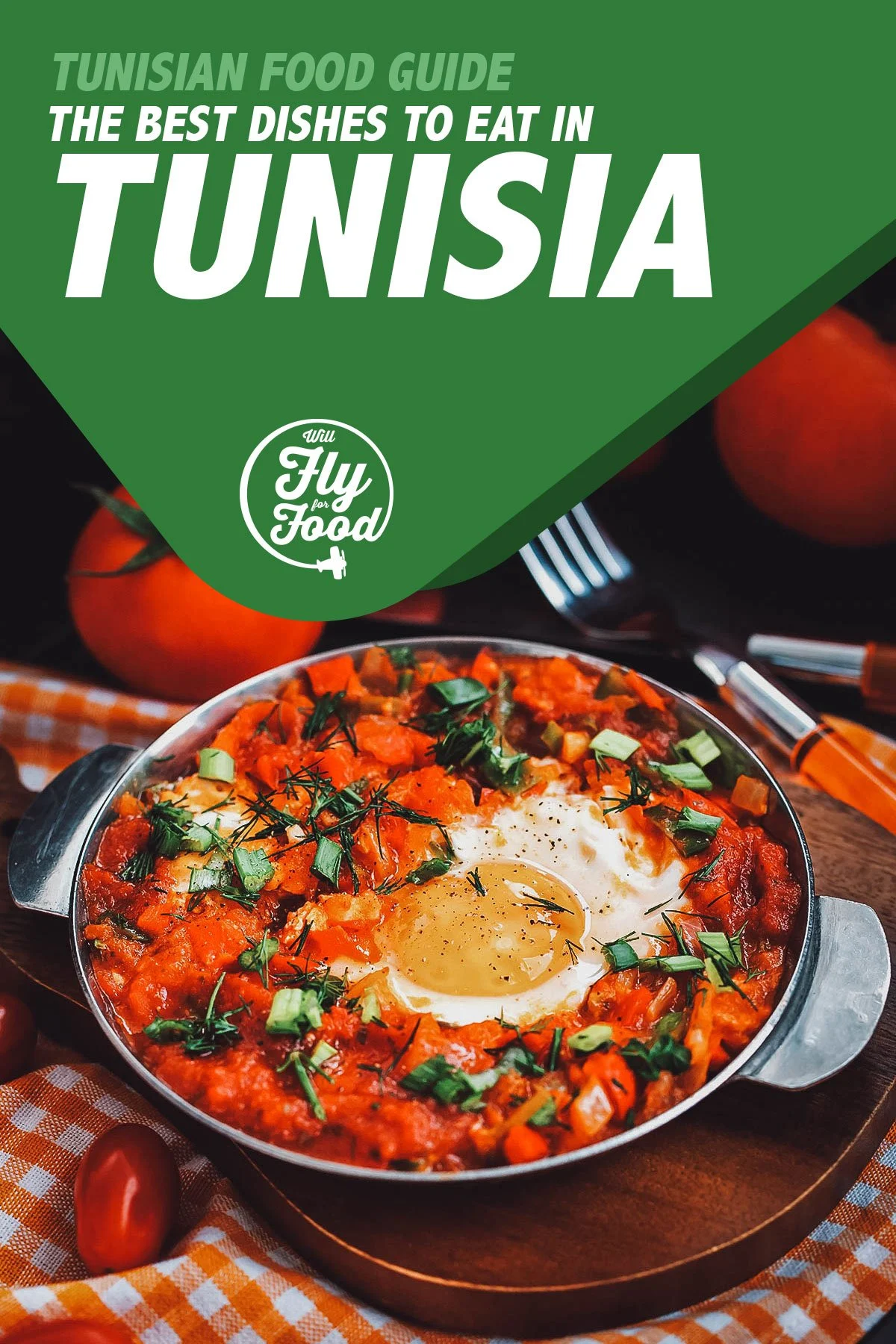
Photo by Kate_Smirnova
WHAT IS TRADITIONAL TUNISIAN CUISINE?
Tunisian food can best be described as a blend of Mediterranean and native Punics-Berber cuisines. Like many countries in the Mediterranean basin, Tunisian cuisine is heavily based on seafood, meat, olive oil, tomatoes, and a plethora of spices like cumin, caraway, coriander, and paprika.
Tunisian cuisine shares many similarities with its North African neighbors, though spend a few days eating Tunisian food and you’ll find that it’s noticeably spicier. This is due in part to the heavy use of harissa in Tunisian cooking. Harissa refers to a spicy paste made from a mixture of ground chili peppers, garlic, and spices. It’s the most important ingredient in many sauces and gravies and is the most commonly used condiment in Tunisian cuisine.
Other than harissa and chilli peppers, other important ingredients often found in Tunisian dishes include tomato paste, tuna, eggs, and Tunisian olives.
MUST-TRY TUNISIAN DISHES
1. Couscous
There’s no better way to start this Tunisian food guide than with couscous. Known as kosksi in the Tunisian dialect, couscous is a staple dish in North African cuisines and is considered a national dish in Tunisia.
Couscous refers to small granules of rolled durum wheat semolina cooked in a special double boiler. To cook, fine-grain couscous is layered over a bed of whole herbs in the upper pot while the meats and vegetables are cooked in the lower pot. As the meat and vegetables cook, steam rises through the vents and into the container above, cooking the pasta with aromatic steam. Similar to risotto, the couscous granules need to be stirred constantly to prevent lumping.
Couscous is traditionally served with the meat and/or vegetable stew spooned on top. It can be consumed in many different ways in Morocco, Algeria, Libya, and Mauritania, but in Tunisia, it’s typically made spicy with harissa sauce and served with lamb, beef, fish, and other types of seafood. In some parts of Tunisia, it can even be served with camel.
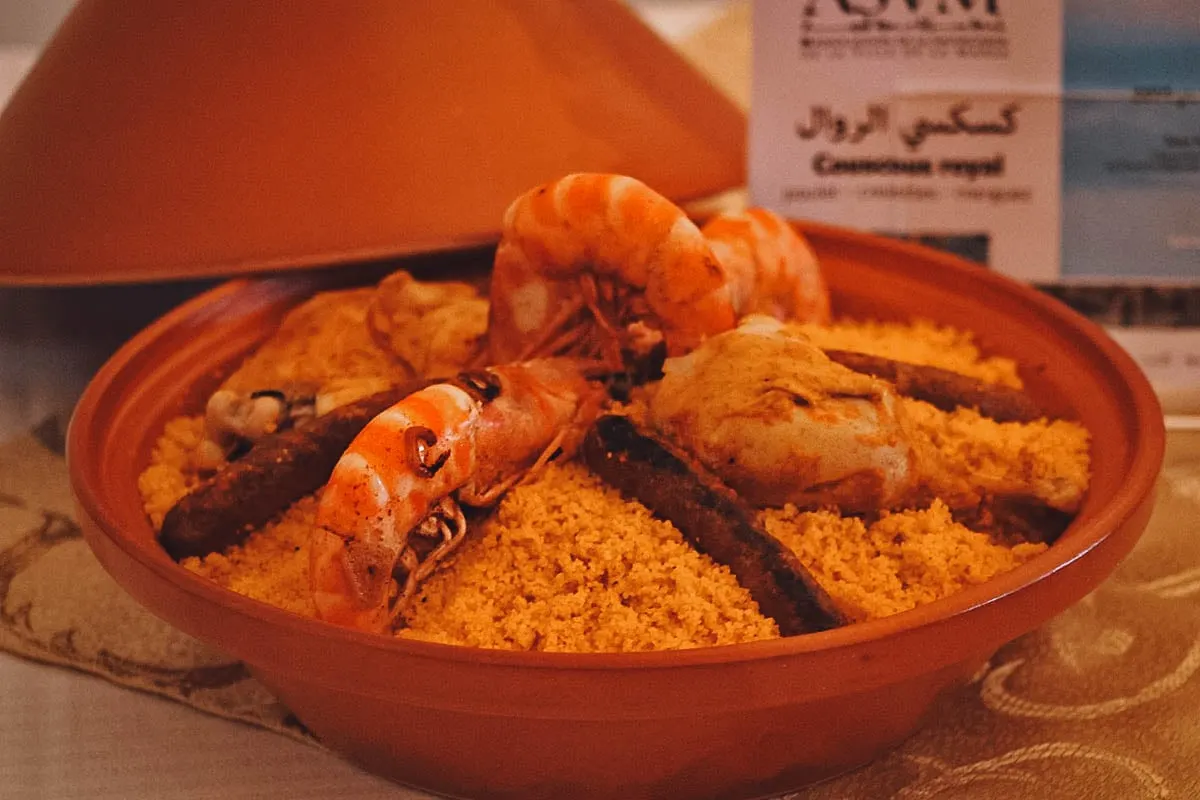
Wajih Khalfallah, CC BY-SA 4.0, via Wikimedia Commons / Processed in Photoshop and Lightroom
2. Masfouf
Masfouf (or mesfouf) refers to a version of sweet couscous that’s traditionally prepared for suhur during the holy month of Ramadan. Extra fine couscous is doused with olive oil before being steamed and then mixed with cold butter (or milk) and sugar.
Tunisian recipes vary but masfouf can be mixed with aromatics like orange blossom water or geranium water for added flavor. The sweetened couscous is usually decorated with a variety of nuts, dates, and other fruits before serving.
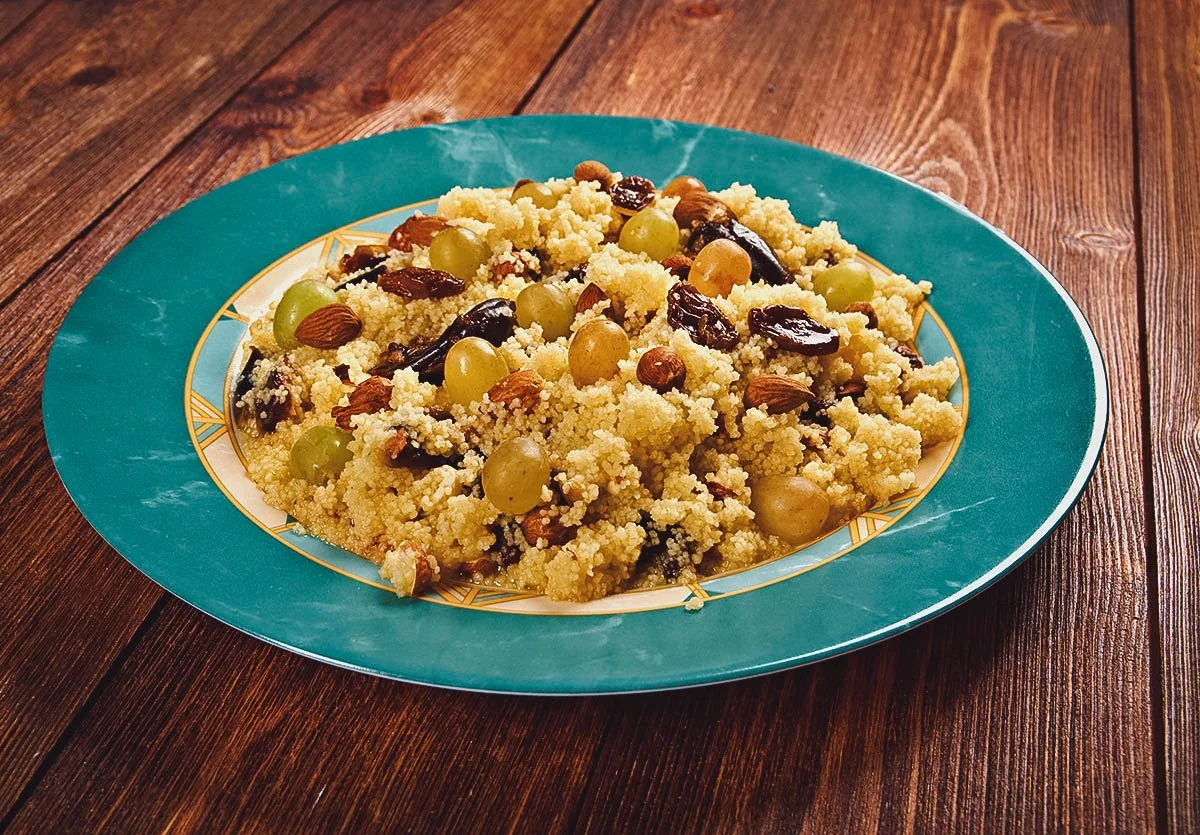
Photo by fanfon
3. Brik
Brik is the Tunisian version of borek. Originally a Turkish dish, it refers to a family of stuffed filo pastry dishes commonly consumed in countries throughout the Balkans, the South Caucasus, the Middle East, Central Asia, and North Africa.
In Tunisia, brik can be made with a variety of savory fillings like tuna, shrimp, boiled potato with capers, preserved lemon, egg, and parsley. The fillings are wrapped in a thin and delicate pastry dough known locally as malsouka or warka before being deep-fried. In other countries, borek is often baked but in Tunisia, it’s typically deep-fried.
The most popular version of these delicious Tunisian pastries is made with egg wrapped in a triangular pastry pocket with tuna, onions, parsley, and harissa. Spritzed with lemon juice, it’s a tasty snack that’s traditionally eaten by hand.
4. Chakchouka
Breakfast lovers will probably be familiar with this next Tunisian dish. More commonly known as shakshouka or shakshuka in the west, chakchouka refers to a globally popular Maghrebi dish of poached eggs served in a spicy tomato sauce with green peppers, onion, garlic, olive oil, paprika, harissa, cumin, and cayenne pepper.
The origins of chakchouka are unclear, though some argue that it may be Tunisian or Yemeni in origin. It’s consumed throughout North Africa and the Middle East and has been a part of Sephardic Jewish cuisine for centuries. It’s become a hugely popular dish in Israel as well thanks to Libyan and Tunisian Jews who migrated to the country in the mid-20th century.
Depending on where it’s from, chakchouka can be made in different ways. Some versions are spicier, others are more sweet. Some make them with just tomatoes and eggs while others will include potatoes, onions, and peppers. Ingredients can vary but for a chakchouka to be considered an authentic Tunisian chakchouka, then it must be made with crushed garlic cloves and caraway powder.
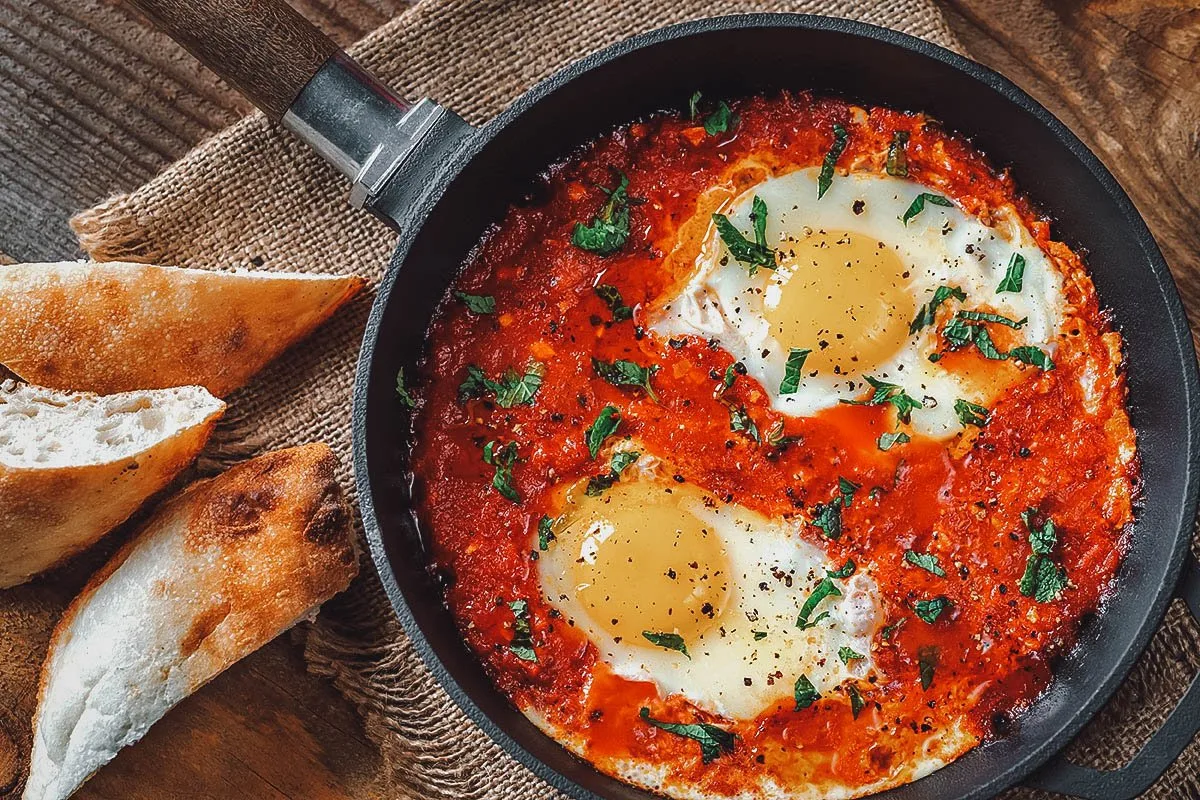
Photo by alex9500
5. Lablabi
Lablabi is a Tunisian chickpea soup made with dried chickpeas served in a thin, garlic- and cumin-flavored broth. Served over pieces of stale crusty bread, it’s commonly eaten for lunch or dinner, especially during colder weather to help the body stay warm.
Recipes vary but a poached egg is usually added to the soup, along with a host of other ingredients like tuna, capers, pepper, Tunisian olives, harissa, olive oil, and lime juice.
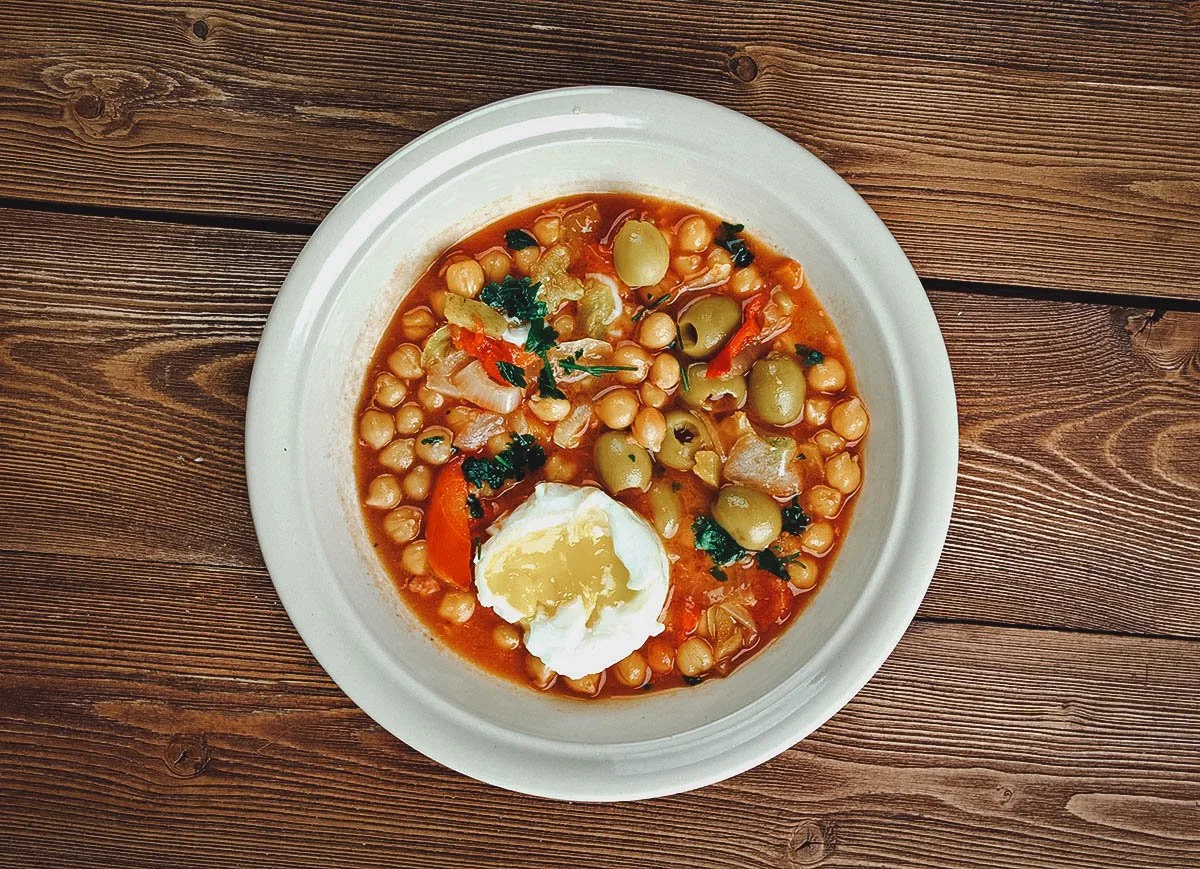
Photo by fanfon
6. Mechouia Salad
Mechouia salad is one of the most popular dishes in Tunisian cuisine. Served at the start of almost every Tunisian meal, it refers to a simple Tunisian salad made with mashed grilled vegetables seasoned with ground coriander and caraway seeds.
To prepare, onions, tomatoes, peppers, eggplant (optional), and garlic are grilled until their outer layers become charred and totally black. The vegetables are then peeled, finely chopped, and mashed together before being seasoned and drizzled with olive oil and lemon juice.
Typically served as a starter or side dish, mechouia salad is usually garnished with additional ingredients like hard-boiled eggs, tuna fish, olives, capers, and fresh parsley or cilantro.
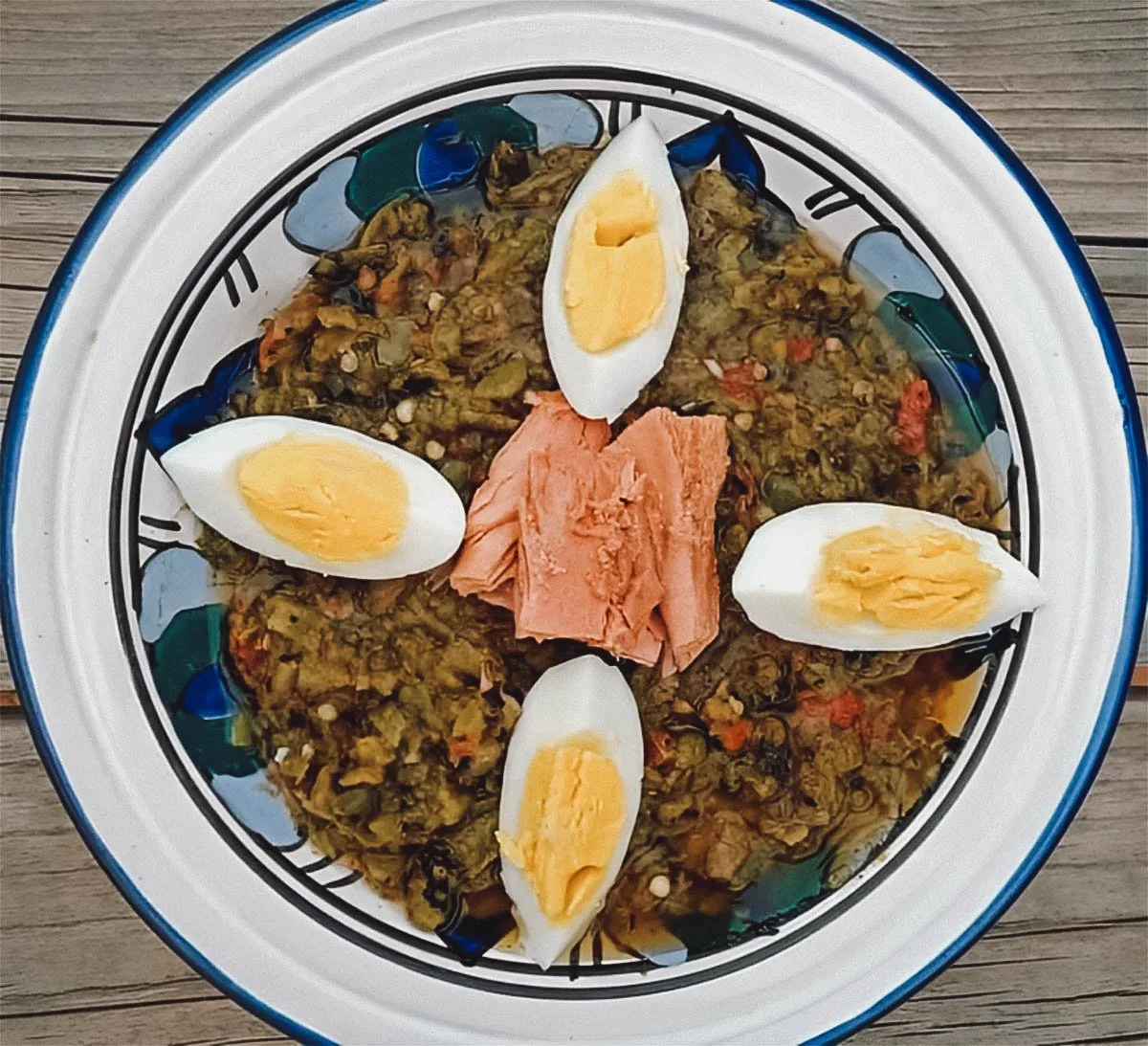
Photo by Asma Ghuidhaoui
7. Omek Houria
Like mechouia salad, omek houria is a simple Tunisian salad made with mashed vegetables, this time carrots. Carrots are boiled and then mashed into a purée with garlic, caraway seeds, harissa, vinegar, olive oil, and salt.
Typically served as a side dish, omek houria is often garnished with finely chopped parsley and other ingredients like boiled eggs, Tunisian olives, feta cheese, and coriander.
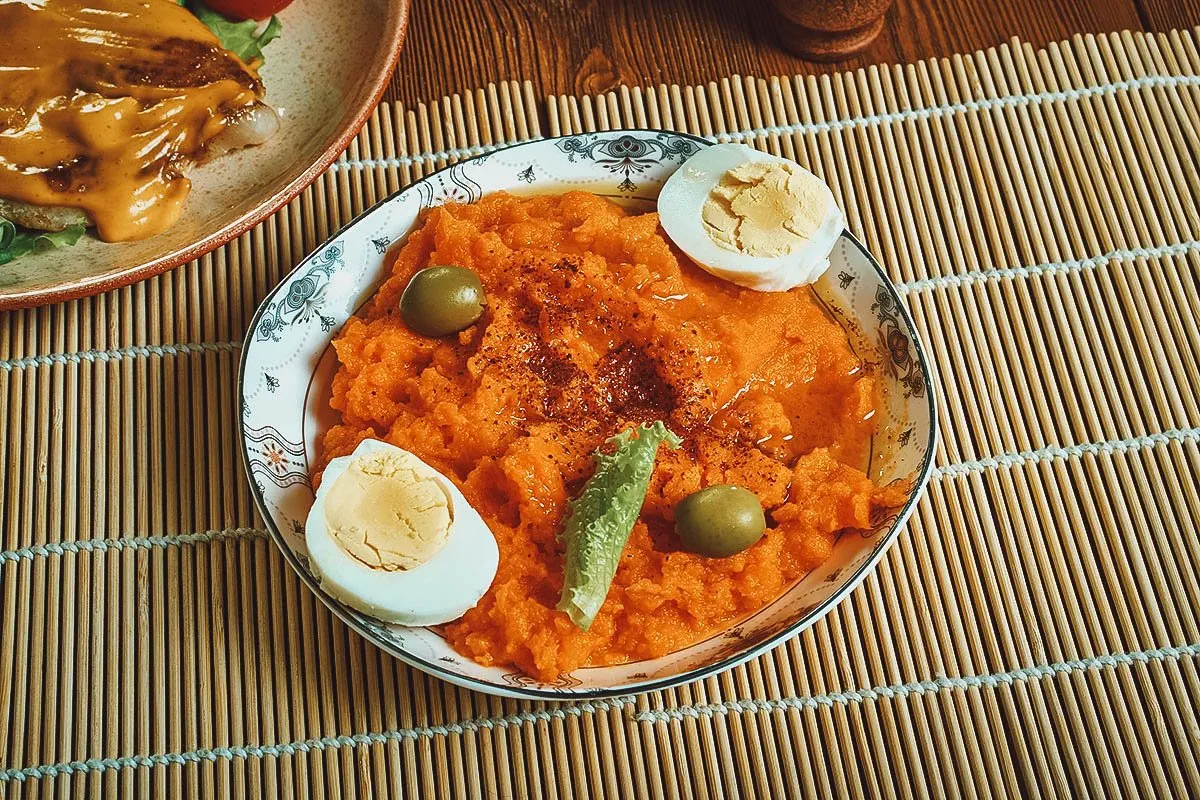
Photo by fanfon
8. Ajlouk Qura’a
Tunisian people seem to be fond of mashed vegetable salads and ajlouk qura’a is yet another example of that. It refers to a type of Tunisian salad made with cooked zucchini mashed with harissa, red bell peppers, garlic, caraway, ground coriander, olive oil, and lemon juice.
Like the previous two dishes, ajlouk qura’a is typically served as a starter or side dish, usually with bread. It’s often served as a component with other Tunisian dishes in kemia, the Tunisian version of mezze platters.
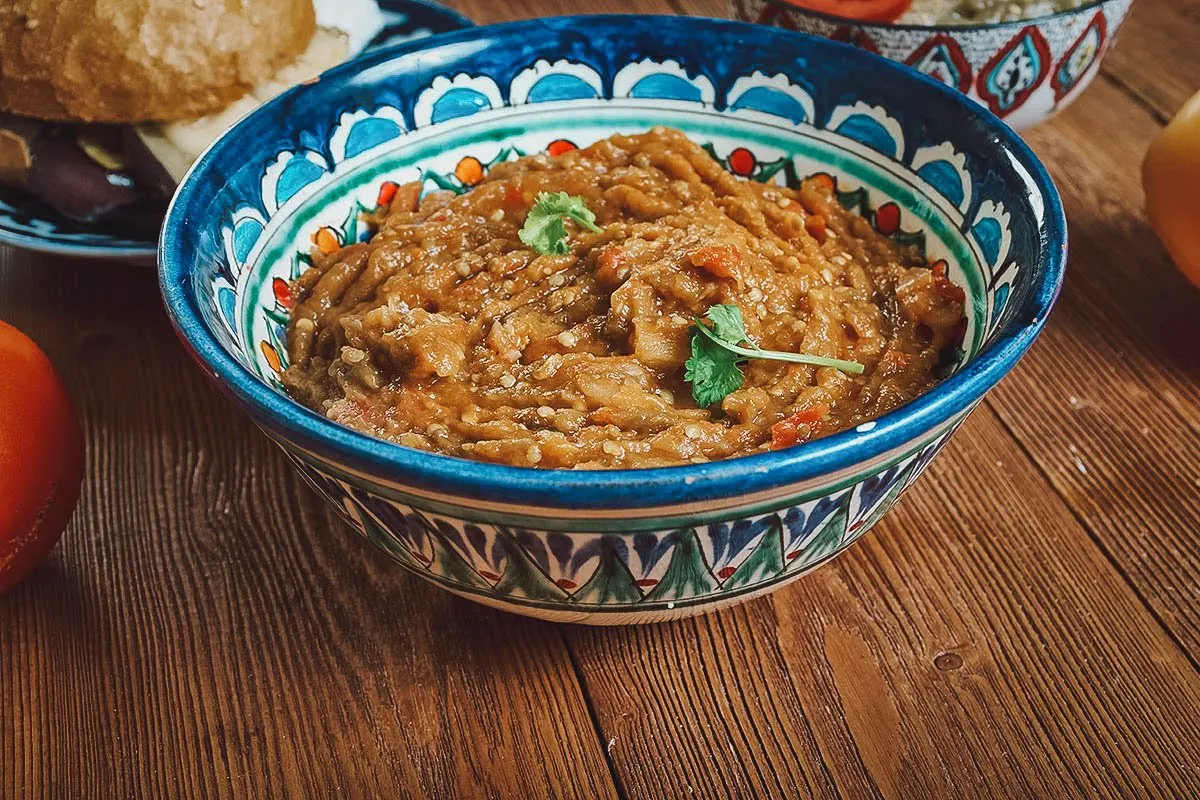
Photo by fanfon
9. Kabkabou
If you like tomato-based stews, then you need to try kabkabou, a traditional Tunisian dish made with fish cooked in a rich tomato sauce.
Different types of fish like grouper, tuna, or mackerel can be used to make kabkabou. Healthy and easy to prepare, it’s made by stewing the fish in a sauce consisting of tomato paste, harissa, garlic, onion, cumin, saffron, and oil. Capers and olive are often added to the stew along with a spritz of lemon juice before serving.
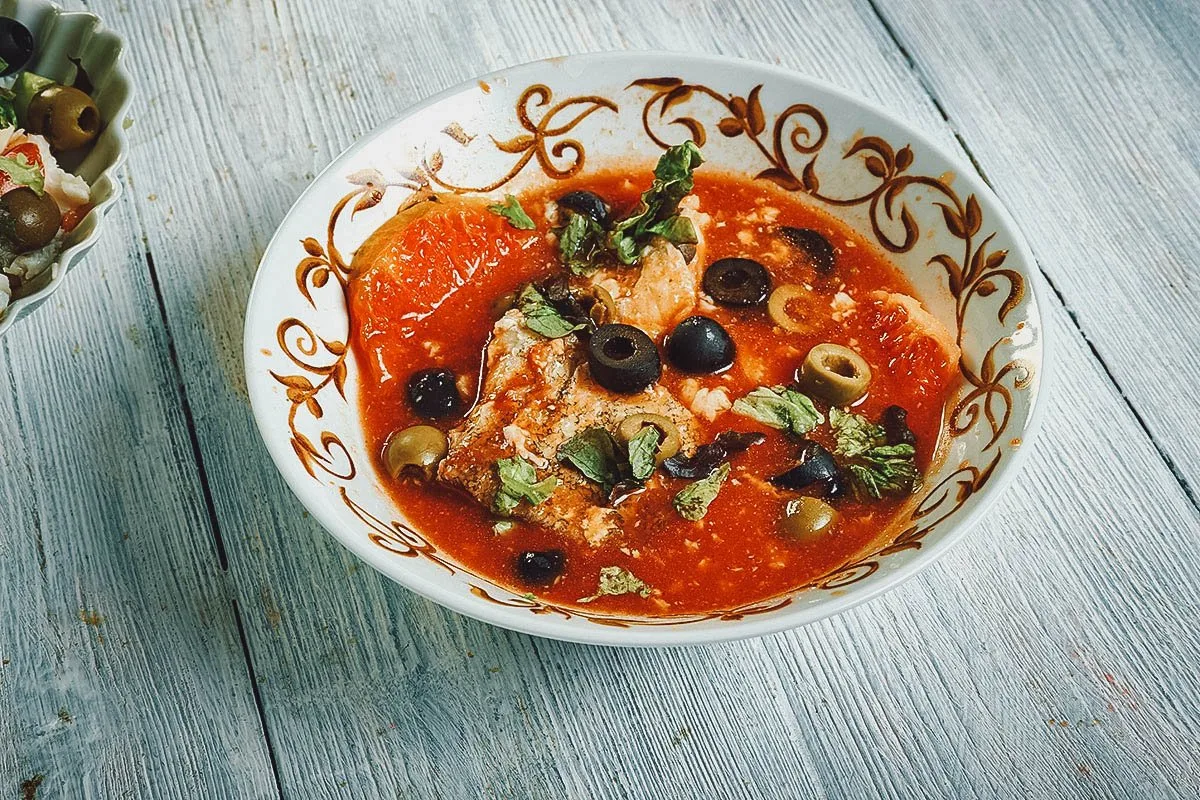
Photo by fanfon
10. Marqa Jelbana
Similar to Moroccan stews cooked in a tajine, marqa refers to a family of slow-cooked Tunisian stews made with meat, tomato paste, onion, garlic, and spices.
Marqa jelbana is a type of Tunisian stew made with peas, potatoes, and some type of meat, usually lamb, beef, or chicken. It’s a hearty stew that’s typically prepared during the colder winter months, usually with a side of freshly baked bread.
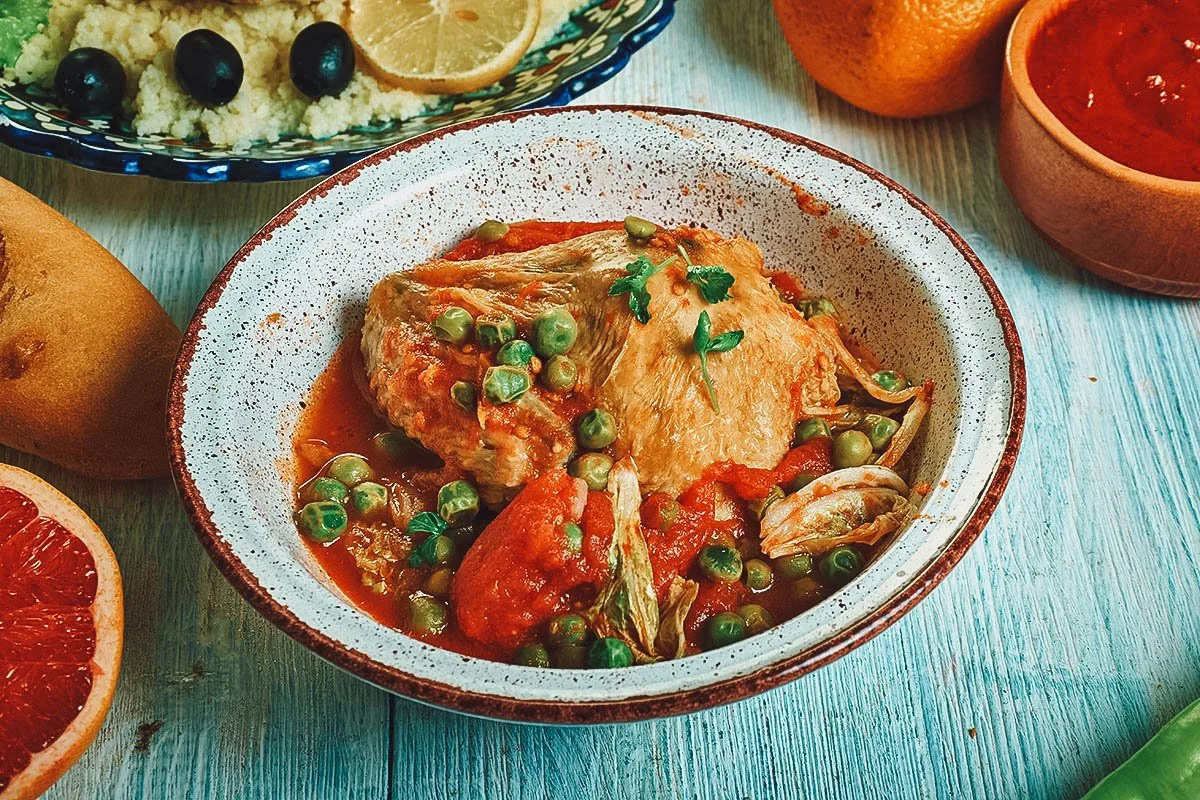
Photo by fanfon
11. Merguez
Merguez refers to a spicy mutton- or beef-based sausage popular in Maghrebi cuisine. Commonly consumed in Tunisia, Morocco, and Algeria, it consists of uncooked lamb or beef (or both) flavored with a host of spices like cumin, harissa, chili pepper, sumac, fennel, and garlic. The heavily seasoned meat mixture is stuffed into a lamb intestine casing and usually grilled.
In Tunisian cuisine, merguez can be eaten on its own or used as an ingredient in Tunisian dishes like ojja. Ojja is a variation of chakchouka made with merguez sausages.
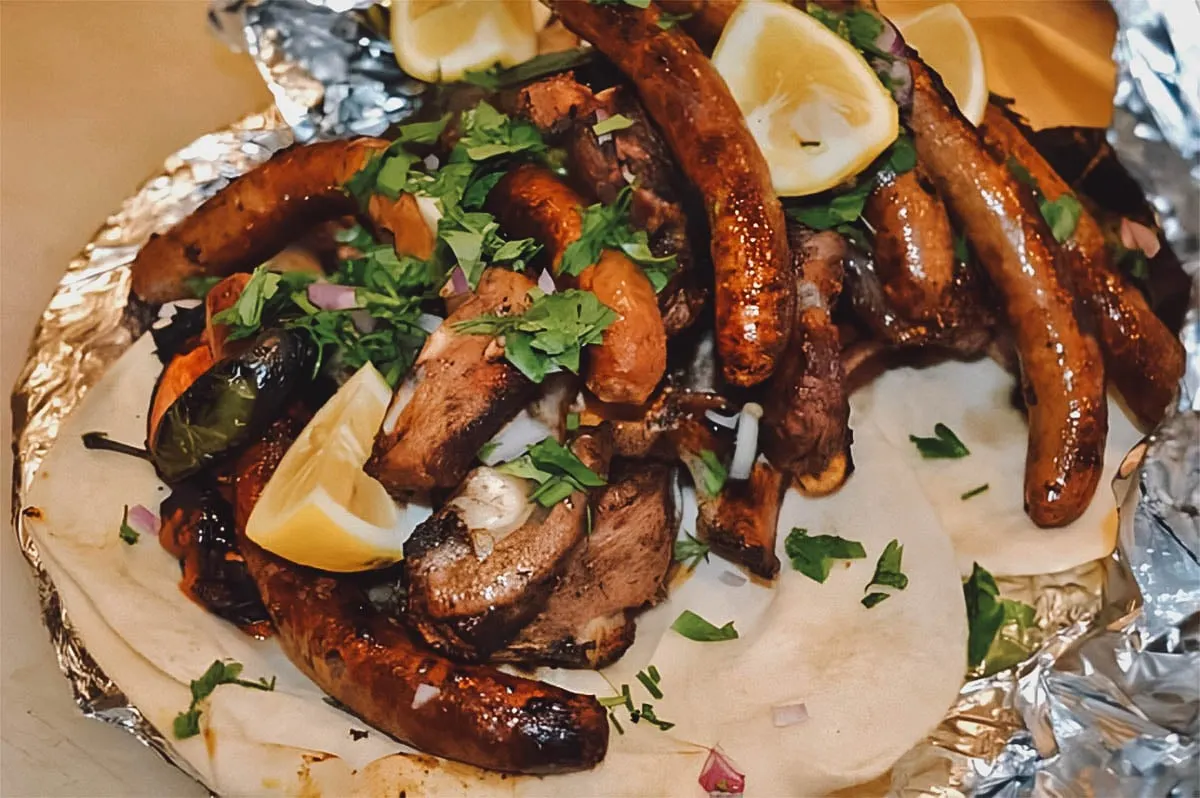
Photo by Asma Ghuidhaoui
12. Fricassee
For many people, the word “fricassee” may conjure images of a traditional French chicken stew but in Tunisia, it refers to a fried sandwich made with tuna, hard-boiled eggs, capers, Tunisian olives, boiled potatoes, and harissa. It’s a popular and filling dish that’s often enjoyed at fast food restaurants and sandwich shops throughout the country.
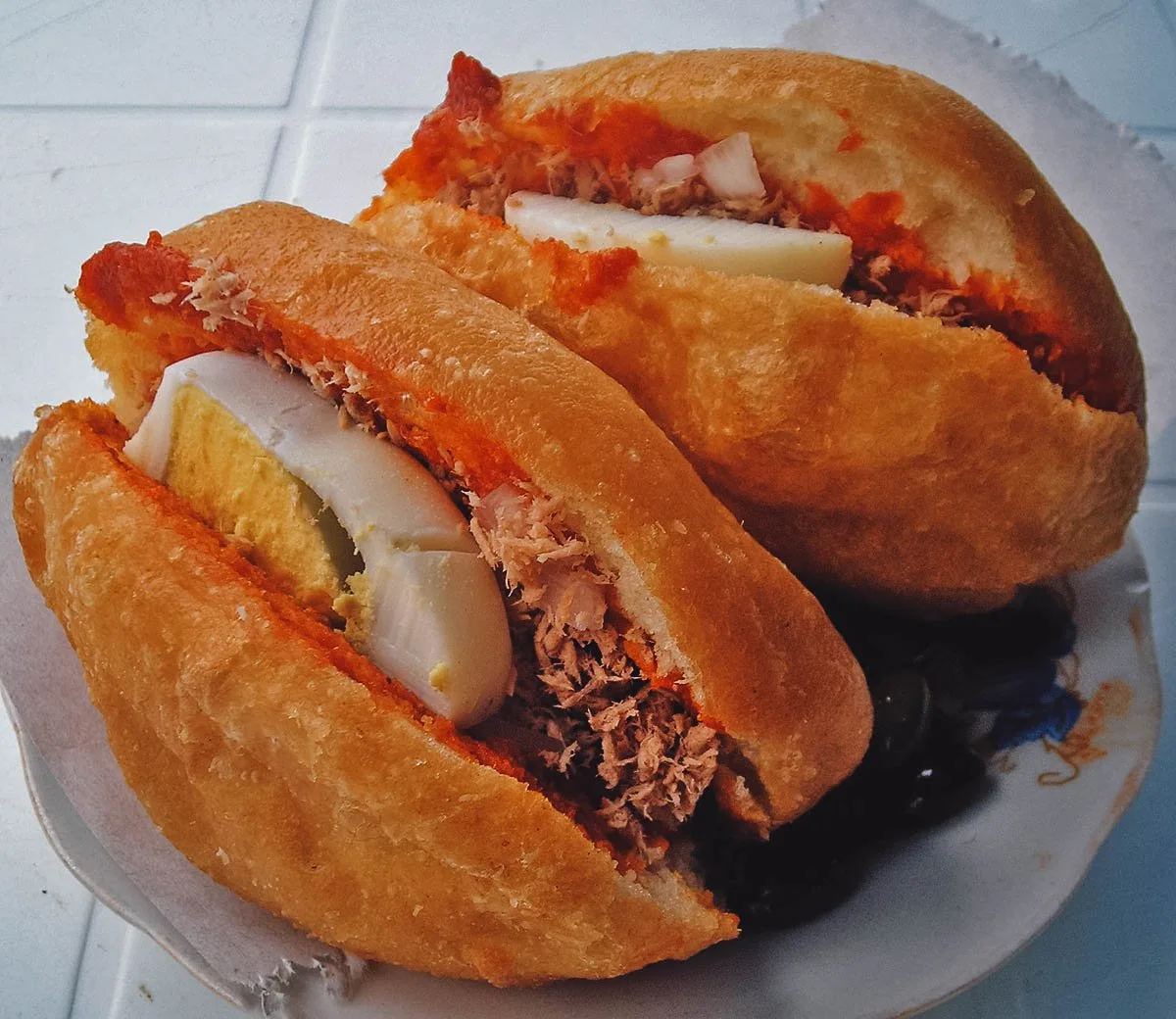
Yamen, CC BY-SA 3.0, via Wikimedia Commons / Processed in Photoshop and Lightroom
13. Harissa
This spicy paste made with chili peppers isn’t necessarily a dish, but it’s still one of the most important entries in this Tunisian food guide. A staple condiment in Maghrebi cuisine, it refers to a hot chili pepper paste made from roasted red peppers, baklouti peppers, garlic, cumin, caraway, coriander, and olive oil.
Harissa is used to flavor many Tunisian dishes like meat and fish stews, couscous, lablabi, and fricassee. It’s such an important ingredient in Tunisian cuisine that it’s sometimes referred to as the “national condiment of Tunisia”.
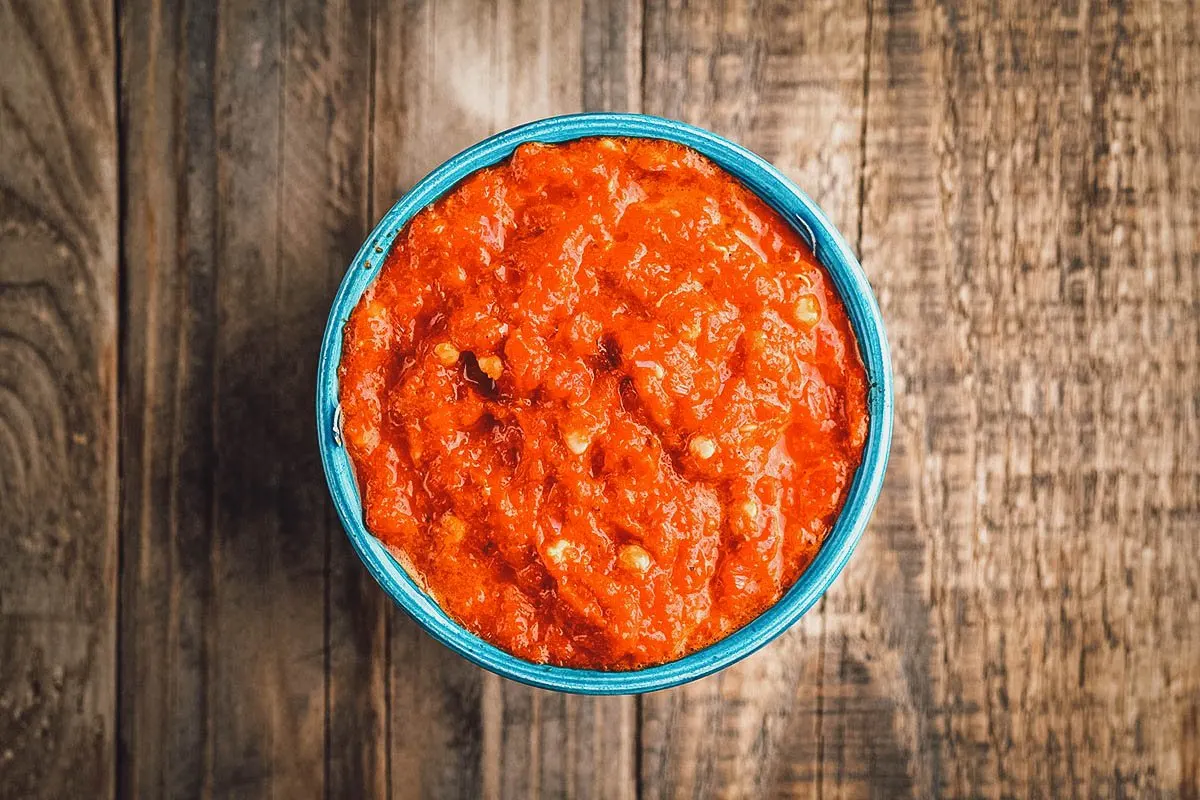
Photo by alexzrv0521
14. Bambalouni
These delicious fried dough rings are a popular snack in many countries and Tunisia is no different. Bambalouni refers to the Tunisian version of the American doughnut. Made with flour dough deep-fried in hot oil, it can be enjoyed at any time of the day, either with a sprinkling of sugar or soaked in honey.
Available at fast food restaurants and street food vendors throughout the country, these Tunisian doughnuts are best when served hot and paired with coffee.
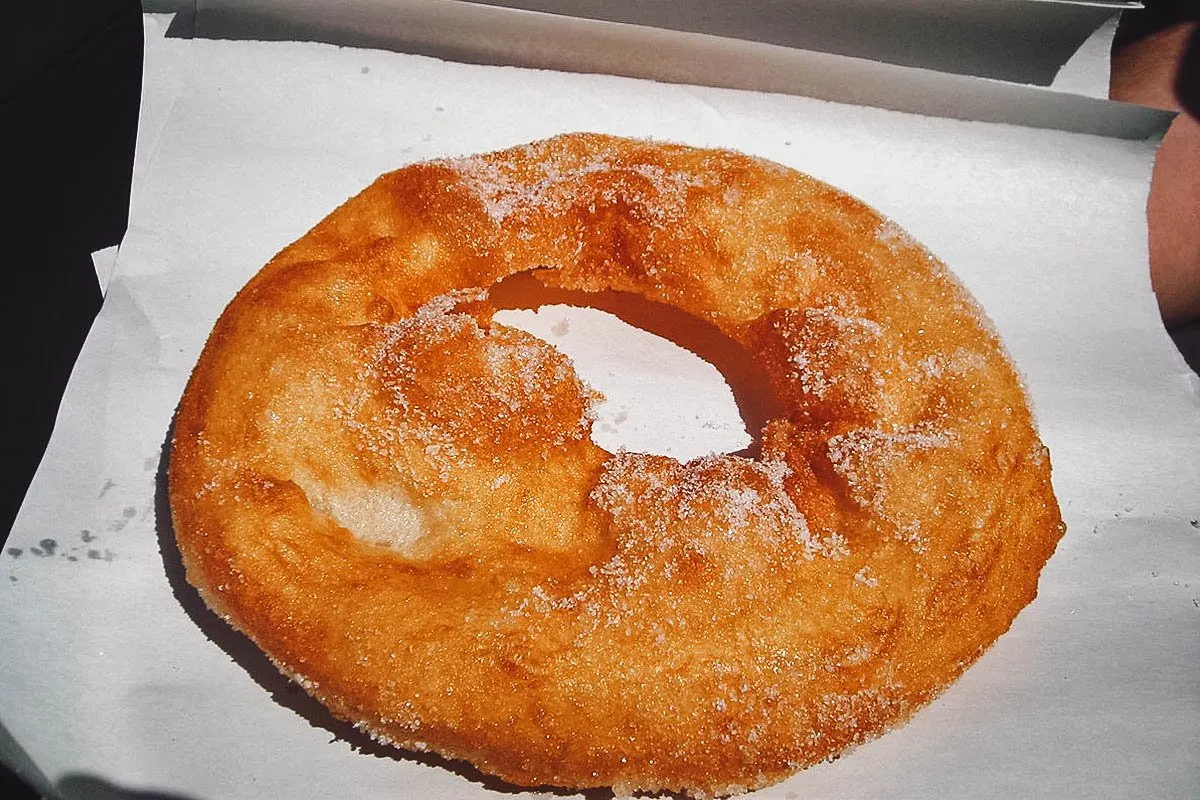
Photo by Yamen, CC BY-SA 3.0, via Wikimedia Commons / Croppsed, processed in Photoshop and Lightroom
15. Makrouth
Makroudh refers to a type of semolina cookie popular in the cuisines of the Maghreb and Malta. It’s made with a combination of semolina flour and all-purpose flour filled with dates, figs, or almond paste. The dough with filling is rolled and cut – usually into diamond shapes – before being baked in an oven or fried in hot oil.
In Tunisia, makroudh is commonly filled with dates but they can also be made with figs. These delicious Tunisian pastries are soaked in a sweet honey or sugar syrup before serving, often with a cup of hot mint tea.
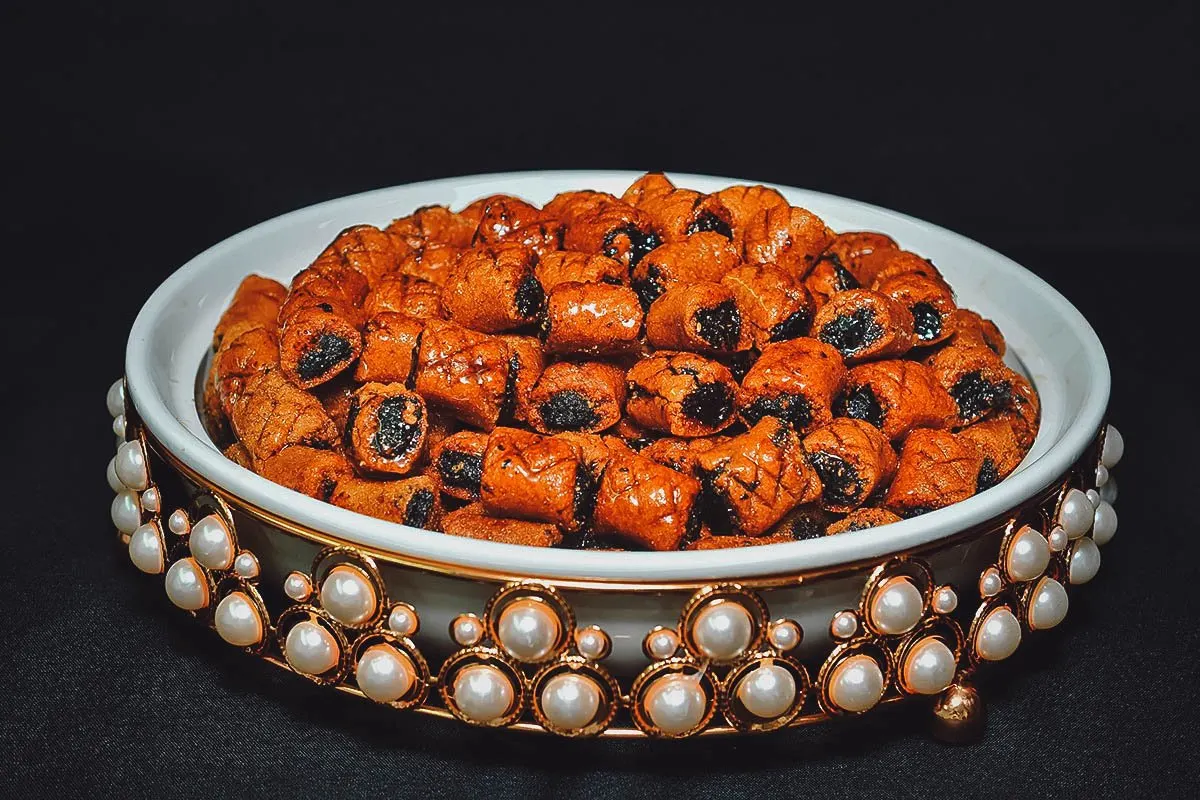
Photo by azarbico
TUNISIAN FOOD TOURS
Needless to say, no one knows Tunisian food better than a local, so what better way to taste the best of Tunisian cuisine than on a guided food tour? A knowledgeable local will lead you to the best restaurants, markets, and street food stalls so all you have to do is follow and eat. Check out Get Your Guide for a list of Tunisian food and wine tasting tours in Tunis and other destinations throughout the country.
FINAL THOUGHTS ON TUNISIAN FOOD
Tunisian food may not be as well-known as Moroccan or Egyptian cuisine but it’s every bit as interesting, especially if you enjoy more spice in your food. This food guide offers just a small taste of Tunisian cuisine but we hope it helps put Tunisia on your radar when searching for the most delicious destinations in Africa.
Disclosure
Some of the links in this Tunisian food guide are affiliate links, meaning we’ll get a small commission if you make a booking at no additional cost to you. As always, we only recommend products and services that we use ourselves and firmly believe in. We really appreciate your support as it helps us make more of these free travel and food guides. Thank you!
Cover photo by OlegDoroshenko. Stock images via Depositphotos.


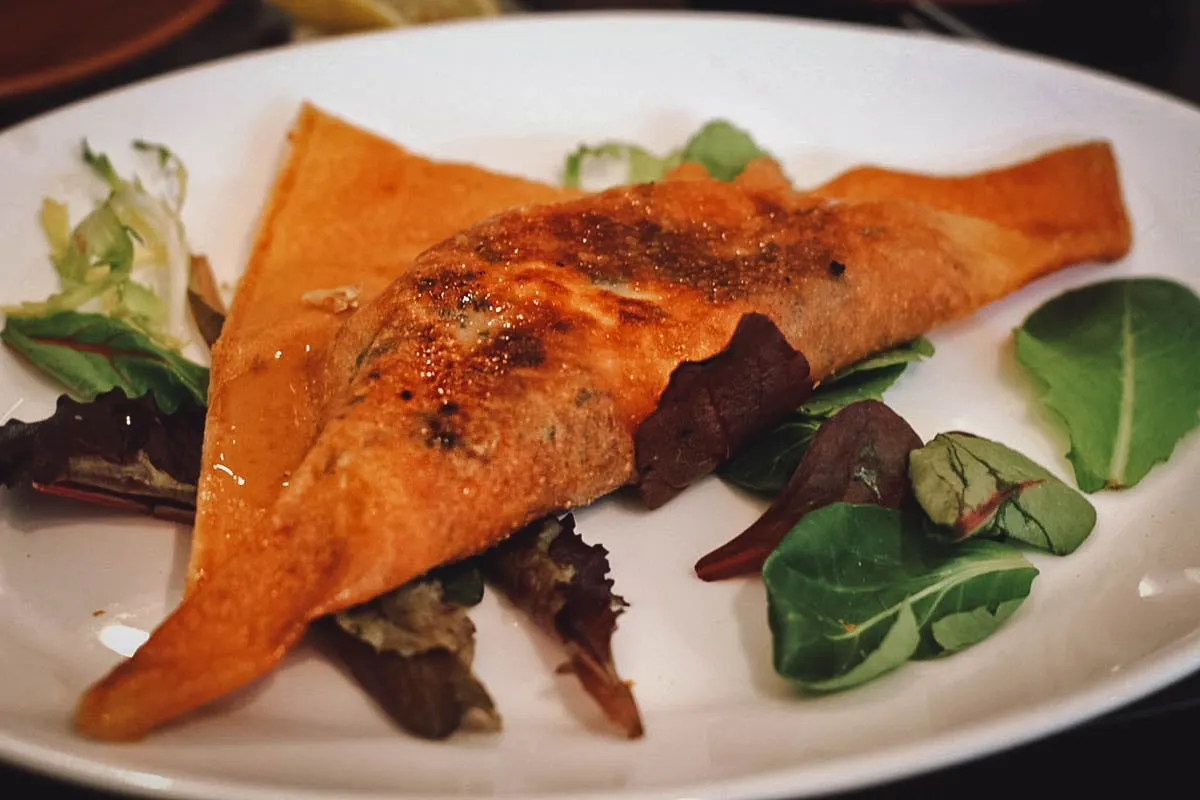
Nader
Monday 14th of November 2022
Sorry but the photos under dishes 5, 6, 8 and 12 do not match the dish names and descriptions. If you can share an email adress, I can provide you with more accurate photos for any Tunisian dish you ask for. Anyway, thank you for your efforts to spot the light on the Tunisian cuisine.
JB & Renée
Monday 14th of November 2022
Yes please! I've been meaning to update this article with better photos and corrections (thanks to Sami) but it's hard to find the time. If you could kindly send photos to jb[at]willflyforfood[dot]net, then that would expedite the process. Thank you Nader!
Sami
Friday 11th of November 2022
This article is great! Thank you for all your efforts and all the research done regarding our culture. As Hala and Feriel mentionned, there were some innacurate photos but I would also like to clarify some information: - Our Tunisian Traditional deep fried brik is not filled with anchovies or chicken; we mostly use Tuna or shrimp or boiled potato mixed with capres, preserved lemon, a raw egg, and parsley (you can add some Harissa for a spicy brika ("brika" is "a brik" in our dialect)). There is a second type of brik which is completely different from this dish; Brik Danouni can be filled with meat or chicken.
- Lablabi is not traditionally served for breakfast. It's a common dish that we eat at lunch or dinner especially during the cold weather to stay warm.
- Houria is not called that way. The salad's tradional name is "Omek Houria".
- Merguez is never used in mloukhia. Merguez can be used in the Ojja being sliced up in dices. Mloukhia is a dish that can be prepared with either beef, lamb, or camel. Its preparation may vary from region to region.
- Fricassée is not tradionally made with hummus. The rest of the content was perfect.
Here are some ideas for future Tunisian Traditional dishes. Mloukhia, Akod, chmenka, marqet babouche, all Tunisian traditional soups (tons of them), Mlawi, Ftayer, Assidat Zgougou, Bssissa, Mossli (Djej mossli, Alouch mossli,...)...
Good luck on your research and thank you for this content! My regards, Sami.
simone g.
Wednesday 20th of September 2023
@Sami, i’m born and raised in la goulette, the beach suburb of tunis. i’m in the US now and i’m looking for mloukhia powder i can’t find it in my or even on line. any idea where i can purchase it. i used to bring it back from france but since 9/11 i can’t bring it in. any idea where to get it? thanks
JB & Renée
Sunday 20th of November 2022
Thank you so much for the insightful and very helpful comment Sami! Apologies it's taken me this long to respond but I've finally corrected the article based on the information you gave.
I'll improve the photos soon as I get the chance. Hopefully Nader can send me pictures since googling the name of the dishes followed by "tunisia" doesn't help. With the exception of couscous, the google results look quite similar to the photos I already have.
In any case, thanks again for your comment. I always enjoy and appreciate getting insightful comments from locals. All the best!
Hala
Wednesday 17th of August 2022
Thank you for this informative article of Tunisia, very detailed description of food that would make you drool. But most of the pictures in reference to the food are not the way that us Tunisian make these staples, and they do not match them in any way… couscous, fricassee, mechwia salad, makroudh, .. they are sadly not represented correctly.
Feriel
Tuesday 25th of October 2022
@JB & Renée, I do thank for this rich and informative article but, as Hela said pictures aren't conform to our traditionnal food. Feriel
JB & Renée
Saturday 20th of August 2022
Thank you for your comment Hala. I'm planning a long trip to northern Africa next year so I'll be sure to improve upon the pictures. Cheers!
Zied
Sunday 30th of January 2022
Very interesting article. Thank you for promoting our national dishes.
JB & Renée
Friday 11th of February 2022
Happy you appreciated the article Zied!